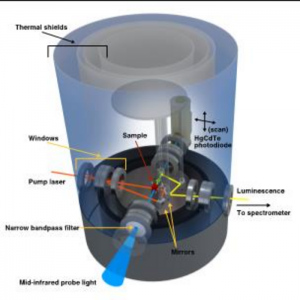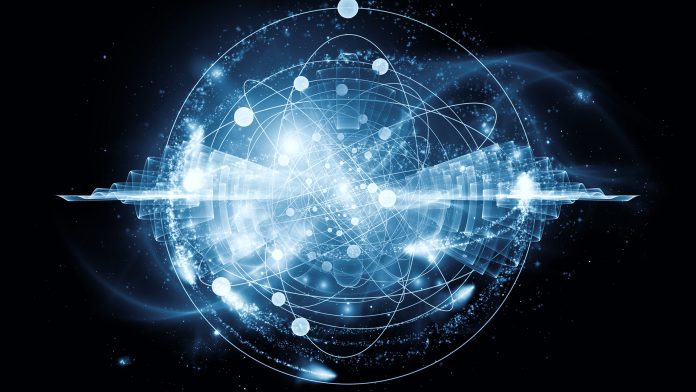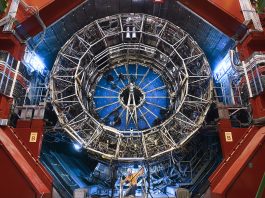Physicists at the University of Tokyo have developed the first Bose-Einstein condensate from quasiparticles, a landmark breakthrough that may advance quantum computing significantly.
The Bose-Einstein condensate is known as the enigmatic ‘fifth state’ of matter, alongside solids, liquids, gases, and plasmas. Now, experts have created the first Bose-Einstein condensate from quasiparticles – entities that are not elementary particles but exhibit similar properties, such as charge and spin.
For decades, scientists were unsure if quasiparticles could undergo Bose-Einstein condensation similarly to real particles, with their findings potentially having significant ramifications for advancing quantum technologies.
The research paper, ‘Observation of Bose-Einstein condensates of excitons in a bulk semiconductor,’ is published in Nature Communications.
What is a Bose-Einstein condensate?
The Bose-Einstein condensate was first predicted in the early 20th century and was only created in a lab in 1995, and remains the oddest and most mysterious state of matter. Bose-Einstein condensates occur when a group of atoms are cooled to within billionths of a degree above absolute zero. To achieve this, scientists traditionally employ lasers and magnet traps to gradually reduce the temperature of a gas, usually comprised of rubidium atoms.
Atoms barely move at this temperature and start to demonstrate unusual behaviour. They experience the same quantum state and start to amalgamate, occupying the same volume as one indistinguishable ‘super atom’ that essentially behaves as a single particle.
Bose-Einstein condensates are the focus of much basic research, including in simulating condensed matter systems, and have a range of applications in quantum information processing. Quantum computing is still in its infancy and uses various systems, all of which depend on quantum bits (qubits) in the same quantum state. Predominantly, a Bose-Einstein condensate is created from dilute gases of ordinary atoms, with a Bose-Einstein condensate made from exotic atoms never being achieved until now.
Understanding quasiparticles
An exotic atom is an atom where one subatomic particle, such as an electron or a proton, is replaced by another subatomic particle with the same charge. For example, positronium is an exotic atom made of an electron and its positively charged anti-particle, a positron.
An exciton is another example. When light hits a semiconductor, the energy is strong enough to excite the electrons, causing them to jump from the valence level of an atom to its conduction level. These excited electrons can flow freely in an electric current – transforming light energy into electrical energy. When negatively charged electrons perform this jump, the hole left behind can be treated as if it were a positively charged particle, with the negative electron and positive hole being attracted and bound together.
This electron-hole pair is an electrically neutral quasiparticle known as an exciton. Quasiparticles do not count as one of the 17 elementary particles of the standard model of particle physics, but still exhibit elementary-particle properties like charge and spin. There are two forms of excitons: orthoexcitons, in which the electron’s spin is parallel to the spin of its hole, and paraexcitons, where the spin is anti-parallel to its hole. Electron-hole systems have been utilised to create other phases of matter, such as electron-hole plasma and even exciton liquid droplets, leading the research to see if they could make a Bose-Einstein condensate out of excitons.
Makoto Kuwata-Gonokami, a physicist at the University of Tokyo and co-author of the paper, commented: “Direct observation of an exciton condensate in a three-dimensional semiconductor has been highly sought after since it was first theoretically proposed in 1962. Nobody knew whether quasiparticles could undergo Bose-Einstein condensation in the same way as real particles. It’s the holy grail of low-temperature physics.”
Pioneering an exciton condensate
The team believed that the most promising candidate for fabricating exciton Bose-Einstein condensates in a bulk semiconductor was hydrogen-like paraexcitons created in cuprous oxide (Cu2O), a compound of copper and oxygen, due to their long lifetime.
In the 1990s, researchers attempted to create paraexciton Bose-Einstein condensate at liquid helium temperatures of around 2 K, but failed due to requiring much colder temperatures. Orthoexcitons cannot reach such a low temperature as they are too short-lived, whereas paraexcitons have an extremely long lifetime of over several hundred nanoseconds – long enough to cool them down to the desired temperature of a Bose-Einstein condensate.
The physicists were able to trap paraexcitons in the bulk of Cu2O below 400 millikelvins by utilising a dilution refrigerator that cools by combining two isotopes of helium. They then visualised the exciton Bose-Einstein condensate in real space using mid-infrared induced absorption imaging. This enabled the team to obtain precision measurements, such as the density and temperature of the excitons, allowing them to observe differences and similarities between exciton and regular atomic Bose-Einstein condensates.

The researchers are now aiming to investigate the dynamics of how the exciton Bose-Einstein condensate forms in the bulk semiconductor and its collective excitations. Their primary aim is to construct a platform based on a system of these exciton Bose-Einstein condensates to understand the quantum mechanics of qubits better.









